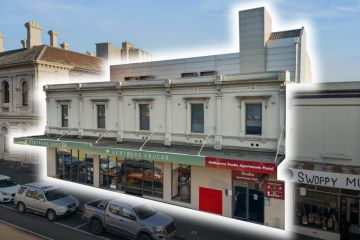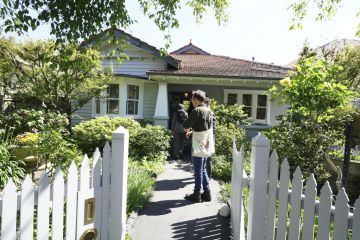Perth house prices down as rates rise
Perth house prices have fallen sharply as declining economic activity and wavering confidence impact buying and selling decisions.
The Domain house price report for the September quarter revealed that the Perth median house price fell by 2.4 per cent over the quarter to $589,100. Perth houses prices have now fallen over three consecutive quarters with five of the last six quarters recording negative growth.

Photo: Supplied
The current Perth median house price is the lowest reported since the June quarter 2013 and has fallen by 3.2 per cent over the past year. Only the resource capitals of Perth and Darwin recorded falling house prices over the September quarter.

Photo: Supplied
Perth unit prices also fell sharply over the September quarter – down by 3.7 per cent to $390,916 for an annual decrease of 2.8 per cent.
Other capital city markets generally reported moderating house price growth as the impact of low and falling interest rates earlier in the year is clearly diminishing. The previously booming markets of Sydney and Melbourne recorded sharp falls in house price growth levels although results remained relatively strong.
Falling house prices over the past year in Perth clearly reflects the impact of the deterioration of the resource-based local economy. Particularly significant is the sharp decline of the FIFO mobile workforce as job opportunities in the mining sector diminished and reduced previously significant demand for accommodation.
Net interstate migration to WA has recorded negative growth over each the past four quarters to March this year according to latest ABS data – for the first time since the June quarter 2003. Net losses over this period have totalled 1269 persons compared to the peak of the net gain in interstate migrants of 11,425 recorded over the four quarters to September 2012
Latest ABS data reports that the WA workforce decreased by 9200 seasonally adjusted over September with the jobless rate remaining at 6.1 per cent due to fall in the participation rate as workers gave up looking for work or retired. An improved economic performance and restored confidence are the keys to the stabilisation of the Perth housing market.
Recent moves by financial regulators that have resulted in across-the-board higher interest rates for residential investors and increases in owner-occupiers mortgage rates by Westpac and now the Commonwealth Bank are however significant negatives for the prospects of the Perth housing market.
These policies were designed to offset perceived risks from overheating housing markets, notably Sydney, but ignore the generally lacklustre performance of most other capital city housing markets and added to the Perth downturn. The spectre of higher interest rates challenging already weakening housing markets however may be offset by a cut in official rates next month. Latest disappointing national ABS jobless data for September surely adds to the case for a cut.
The national seasonally adjusted unemployment rate remained steady at 6.2 per cent over the month despite a fall in the number of employed. Only a drop in the participation rate kept the jobless rate steady as discouraged job seekers and retirees departed the workforce. The national unemployment rate has remained intractably above 6 per cent for 16 consecutive months.
A November rate cut by the Reserve Bank would provide an early Christmas present for retailers and help resuscitate a continuing dormant economy. A rate cut would be unlikely to refuel the sharply dissipating Sydney house price boom, but would certainly provide welcome relief to the resources states and their struggling housing markets – particularly Western Australia and Perth that have carried most of the national economic load for the past decade.
Dr Andrew Wilson is Domain Group Senior Economist Twitter@DocAndrewWilson
We recommend
We thought you might like
States
Capital Cities
Capital Cities - Rentals
Popular Areas
Allhomes
More







